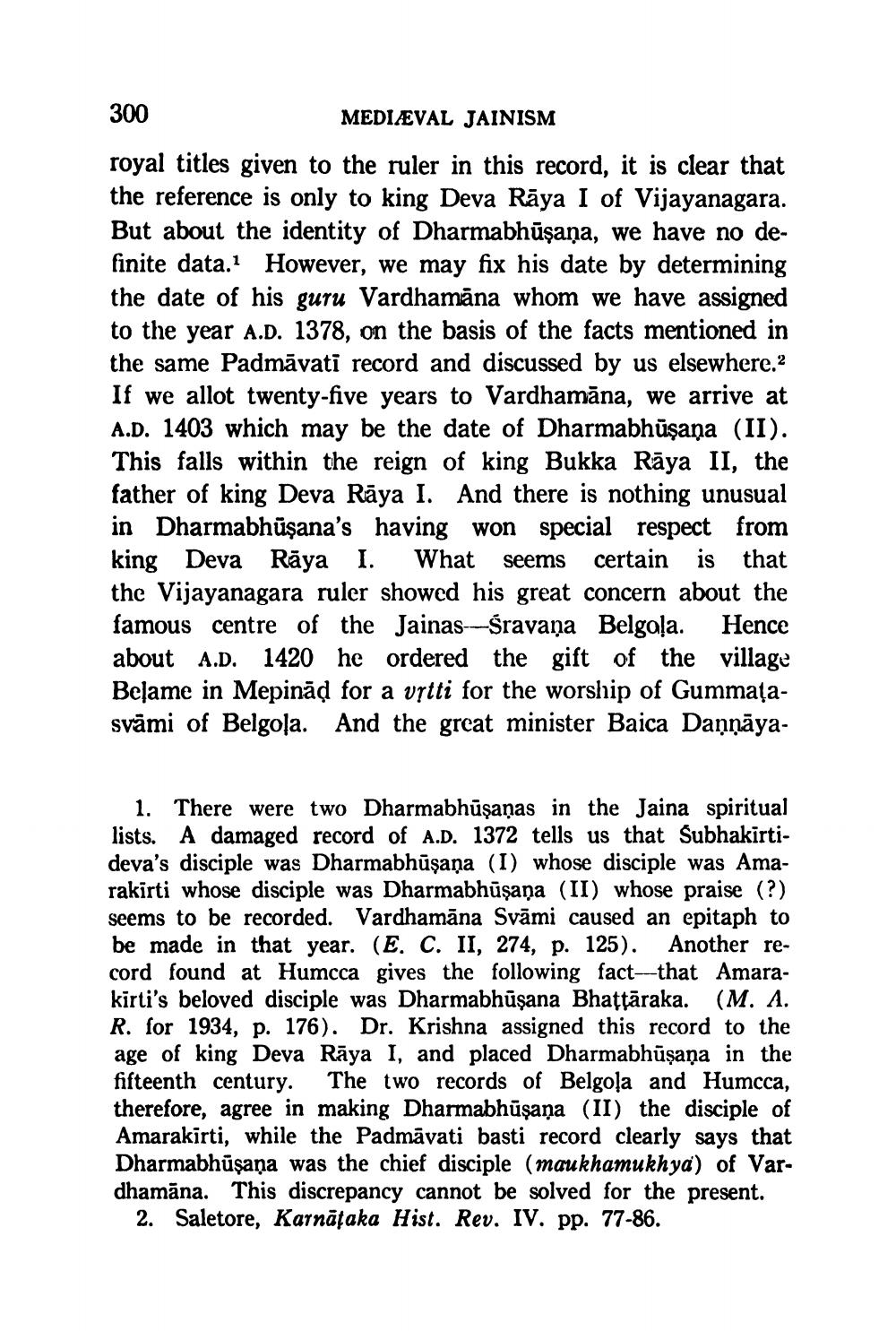________________
300
MEDIÆVAL JAINISM royal titles given to the ruler in this record, it is clear that the reference is only to king Deva Rāya I of Vijayanagara. But about the identity of Dharmabhūşaņa, we have no definite data. However, we may fix his date by determining the date of his guru Vardhamāna whom we have assigned to the year A.D. 1378, on the basis of the facts mentioned in the same Padmāvati record and discussed by us elsewhere.? If we allot twenty-five years to Vardhamāna, we arrive at A.D. 1403 which may be the date of Dharmabhūşaņa (II). This falls within the reign of king Bukka Rāya II, the father of king Deva Rāya I. And there is nothing unusual in Dharmabhūşana's having won special respect from king Deva Rāya 1. What seems certain is that the Vijayanagara ruler showed his great concern about the famous centre of the Jainas--Sravana Belgaļa. Hence about A.D. 1420 he ordered the gift of the village Belame in Mepinād for a vrtti for the worship of Gummaļasvāmi of Belgoļa. And the great minister Baica Daņņāya
1. There were two Dharmabhūşaņas in the Jaina spiritual lists. A damaged record of A.D. 1372 tells us that Subhakirtideva's disciple was Dharmabhūşana (I) whose disciple was Amarakirti whose disciple was Dharmabhūşaņa (II) whose praise (?) seems to be recorded. Vardhamāna Svāmi caused an epitaph to be made in that year. (E. C. II, 274, p. 125). Another record found at Humcca gives the following fact—that Amarakirti's beloved disciple was Dharmabhūşana Bhattāraka. (M. A. R. for 1934, p. 176). Dr. Krishna assigned this record to the age of king Deva Rāya I, and placed Dharmabhūşaņa in the fifteenth century. The two records of Belgola and Humcca, therefore, agree in making Dharmabhūşana (II) the disciple of Amarakirti, while the Padmāvati basti record clearly says that Dharmabhūşaņa was the chief disciple (maukhamukhya) of Vardhamāna. This discrepancy cannot be solved for the present.
2. Saletore, Karnataka Hist. Rev. IV. pp. 77-86.




